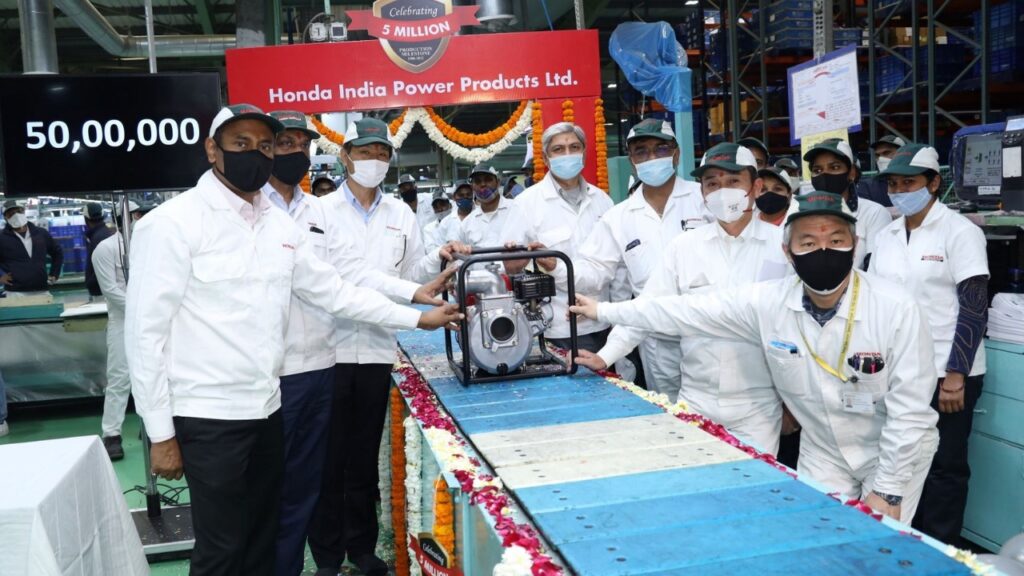1. At a Glance
If Zen had a balance sheet, it would look like Honda India Power Products Ltd’s. A company that literally runs on clean engines, zero debt, and Buddha-level patience when it comes to sales growth. The stock trades at ₹2,454 (as of 21 Nov 2025), down about16.5% in a year, which is basically Mr. Market saying “good company, boring chart.” Market cap? A respectable₹2,488 crore, which is about the GDP of a mid-sized coastal town in Andhra Pradesh.
But don’t let the calm fool you — beneath that polite Japanese corporate exterior is a dividend-yielding beast. A4.08% yieldand1000% interim dividendin FY26 is not your average PSU giveaway — it’s Honda’s way of saying, “We may not grow fast, but we pay you to wait.”
WithROCE at 12.8%andROE at 9.47%, Honda India Power Products Ltd (HIPPL) is the slightly nerdy cousin of Honda Motors — the one who doesn’t race, but ensures the lights never go out at the track. The company’s September 2025 quarter sawrevenue at ₹176 croreandPAT at ₹11.17 crore, up a healthy30.8% YoY, even as sales dipped a smidge by0.9%. Classic Honda — smooth on the throttle, minimal drama.
2. Introduction
Once upon a time in 1985, when Doordarshan was HD enough, Honda brought its engines to India — not the two-wheelers or cars, but power products. Portable gensets, water pumps, engines, brush cutters, tillers — basically everything that makes you look like a productive farmer or a reliable contractor.
They used to be calledHonda Siel Power Products, until 2020 when “Siel” was dropped faster than most joint ventures in India. Now fullyHonda India Power Products, they’re part of the same global powerhouse that’s beenthe world’s largest motorcycle maker since 1959.
Here’s the twist: more than half of Honda India’s sales —57% to be exact— come from exports. Think of it as India’s silent export warrior, sending compact generators to North America, Europe, and Australia. Meanwhile, the domestic 7kVA genset market is booming, thanks to erratic power cuts and Indian weddings that demand “soundproof” generators louder than the DJ.
ItsGreater Noida facilitychurns out3.5 lakh units annually, with an impressive5 million cumulative production milestonereached in FY23. That’s more engines than most car companies sell cars.
3. Business Model – WTF Do They Even Do?
Honda India Power Products Ltd is not your average capital goods play. It makesportable power equipment— the kind of stuff that keeps your farm irrigated, your construction site alive, and your fancy bungalow lawn trimmed. The portfolio includes:
- Generators (Gensets)– From 1kVA to 7kVA, these are the backup plans of India.
- Water Pumps– The saviours of both farms and flooded basements.
- General Purpose Engines– Used in construction and small-scale industry equipment.
- Brush Cutters & Tillers– For the “Make Gardening Great Again” crowd.
Their customer base ranges from farmers to fire departments. And let’s be honest, when the monsoon hits and the grid collapses, that portable genset becomes more important than Wi-Fi.
The business is alsolargely asset-light, relying on one major plant at Greater Noida but selling through600+ dealersto over25 lakh customers. They’re not chasing quantity; they’re perfecting reliability — the Japanese way.
So, while other smallcap manufacturers are busy over-leveraging and chasing tenders, Honda India quietly hums along with zero debt, spotless governance, and dividends fat enough to make PSU investors blush.
4. Financials Overview
Quarterly Comparison Table (₹ crore)
| Metric | Q2 FY26 (Sep 2025) | Q2 FY25 (Sep 2024) | Q1 FY26 (Jun 2025) | YoY % | QoQ % |
|---|---|---|---|---|---|
| Revenue | 176 | 175 | 155 | 0.9% | 13.5% |
| EBITDA | 11 | 7 | 8 | 57% | 37.5% |
| PAT | 11.17 | 9 | 9.35 | 24% | 19% |
| EPS (₹) | 11.01 | 8.42 | 9.35 | 31% | 17.8% |
Commentary:Honda India is the guy in your class who always gets 80% — never a topper, never a failure. Revenue’s flattish, but profit jumps because of
one thing —discipline. No debt, no interest, and a bit ofother income (₹41 crore annually)acting like an unseen sidekick. That’s why PAT margin sits at around10%, which is impressive for an industrial player that doesn’t overcharge.
5. Valuation Discussion – Fair Value Range Only
Let’s be honest: valuing Honda India is like valuing peace of mind. But let’s crunch it anyway.
a) P/E Method:EPS (TTM): ₹74.8Industry P/E: 34.8Company P/E: 32.8
➡️Fair Value Range (P/E method)= ₹74.8 × (30–35) =₹2,244 – ₹2,618
b) EV/EBITDA Method:EV = ₹2,043 croreEBITDA (FY25): ₹125 crore (approx based on OPM ~10% of ₹1,246 crore FY24 sales)EV/EBITDA = 16.3×Industry average: 15–18×
➡️Fair Value Range (EV/EBITDA method)= ₹1,950 – ₹2,250 crore (EV) → Share price range:₹2,200 – ₹2,500
c) DCF (simplified)Assuming FCF of ₹65 crore, 5% long-term growth, and 10% discount rate →Intrinsic value ≈ ₹2,300 crore
✅Consolidated Fair Value Range (Educational only): ₹2,200 – ₹2,600 per share
Disclaimer:This fair value range is for educational purposes only and not investment advice.
6. What’s Cooking – News, Triggers, Drama
2025 has been Honda India’s most “corporate gossip-worthy” year in a decade. Let’s review the highlights:
- Electric Ambitions:The company has officially amended itsMemorandum of Association (MOA)to add the manufacturing of‘eGX’ electric motors. Yes, you read that right — Honda is going electric, one genset at a time.
- Dividend Bonanza:FY26 began with a1000% interim dividend, followed by afinal dividend of ₹21.50/shareproposed at the AGM on25 Sept 2025. Somewhere, PSU investors are taking notes.
- DRI Investigation:On 10 Aug 2023, theDirectorate of Revenue Intelligence (DRI)initiated an investigation — but no major impact has surfaced. Probably just a routine check-up, not a heart attack.
- Environmental Compliance:TheUttar Pradesh Pollution Control Board (UPPCB)recently asked them to install online

